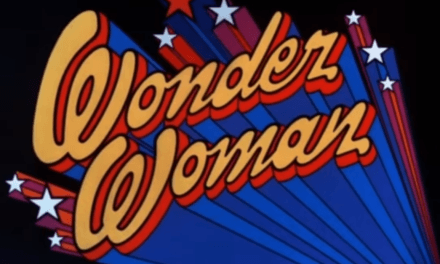As argued by Anna Potter and Jeanette Steemers in the new Routledge Companion to Media Industries, children are an often overlooked, but very special television audience (2021), both when it comes to thinking of children in relation to traditional and online television viewing. However, several initiatives are currently trying to make sure that this special and important audience gets the attention needed in a time of major changes in the form of new reports, conferences and online events.
In the UK, the Children’s Media Foundation (CMF) (set up in 2011 to work ”towards ensuring that UK kids have the best possible media on all platforms at all ages”, 2021: 7) follows the developments in public service content for children closely, most recently in the report ‘Our children’s future? Does public service media matter?’ (2021). The report opens by pointing to how Ofcom’s public service media consultation ‘Small Screen: Big Debate’ (2021) had very few references to children’s content and how “the Government’s new panel of advisors was initially set up without a single children’s specialist” (2021: 6) despite the pressing need to focus on how to remain relevant to children and young audiences in the current media landscape.

Fig. 1: The report ‘Our children’s future? Does public service media matter?’ published by the Children’s Media Foundation this year presents an impressive range of voices and perspectives on the current state of children’s media in the UK and possible future directions. The full report is available here.
The CMF report has an excellent collection of articles on why it’s crucial to take this special audience seriously, discussing issues of value in policy, production and public service and how to think of the media experiences of today’s children before exploring the ways in which a new public service media framework can best serve the children’s audience.
The CMF also publishes a monthly newsletter, outlining current debates and containing invitations for a range of free events on children’s content. The October newsletter points to a busy autumn, for instance with the upcoming decision on the fate of the Young Audiences Fund after it’s three year pilot run (Steemers 2021) in a time where a study from the British Film Institute has concluded that less than a quarter of British children believe TV represents them (Kaminska 2021).
The Children’s Media Conference in Copenhagen
In Denmark, the Children’s Media Conference on 7 October showed how there is currently a keen interest in exploring how to think of quality content for children in a multi-platform era. Focusing mostly on production rather than policy, the one-day conference (co-organised by the Danish Broadcasting Corporation (DR) and the children’s film festival Buster) had 350 participants listening to a wide range of presentations on the media use of children as well as case studies and talks on specific productions and approaches, in film and television as well as gaming.

Fig. 2: The Children’s Media Conference gathered 350 people for a one-day conference in the Danish Broadcasting Corporation’s Studio 2 in Copenhagen. Photo: Eva Novrup Redvall.
The focus of the conference was Danish children and content for them, but there were also international guests such as Knut Næsheim from NRK presenting the Norwegian public service broadcaster’s popular initiative for the youngest children, “Minibarna”, and Development Executive for Preschool at the BBC, Ros Attille, giving examples of how BBC children’s programmes work with themes such as diversity and representation.
A still more segmented children’s audience
The presentations on children’s media use illustrated how thinking about this special audience is becoming marked by still more segmentation when trying to cater to the specific needs of particular age groups. For a long time, DR didn’t produce television for the smallest children, partly based on a conviction that they shouldn’t be watching a screen (Christensen 2020). This changed in 2021, when DR launched Minisjang for the 1-3-year-olds which acknowledged that toddlers are also heavy media users. Research from DR documents that 76% of the Danish 1-3-year-olds watch or stream television on a weekly basis, while 41% play digital games and 58% listen to music (Freudendal 2021).

Fig. 3: Rikke Flodin from the design anthropology consultancy firm Will & Agency illustrates how to think of the segment of 10-15-year-olds as marked by three remarkably different stages of “signing in”, “signing out” and “planning for the future”. Photo: Eva Novrup Redvall.
At the conference, Rikke Flodin from the design anthropology consultancy firm Will & Agency presented their analysis for DR of how one has to think of the 10-15-year-olds as a highly diverse demographic. The qualitative research from Will & Agency suggests that this time of being a teenager can be divided into three overall categories, with the 10-12-year-olds as the ones “signing in” to different groups and communities and still being close to their parents, while the 13-14-year-olds are “signing out”, becoming more independent, looking for their individual identities in smaller groups as well as distancing themselves more from their family. The 15-year-olds, “the planners”, are starting to plan their futures and in a completely different mindset, hence trying to target 10-15-year-olds as one homogenous group is almost impossible.
National or international content, diversity and representation
Thinking about different age groups is also complicated by the fact that even within specific ages children – just like adults – are of course different individuals with different backgrounds, personalities and interests. Moreover, there is the national perspective, if one wants to make children’s content that might be able to cross borders … At the conference, Ros Attille from the BBC presented on Zoom just after a session on the popular DR format ‘Children’s fantastic stories’ (‘Børns fantastiske fortællinger’) which is based on director Kristian Nordentoft getting kids to tell stories and then making them into short animated films. The session focused on how the latest episodes in this series built on children who were encouraged to include popular characters from the DR universe in their storytelling, which led to quite dramatic and somewhat disgusting events with the characters diving into filled toilets or even dying.

Fig. 4: This episode of Children’s fantastic stories’ (Børns fantastiske fortællinger), entitled ‘Bella and the many poos’ (‘Bella og de mange lorter’), on dr.dk has two children telling quite the story of the two popular DR characters Bamse and Kylling.
Attille, whose presentation followed directly after, shared how it was hard to get permission to say ‘poo’ in BBC children’s content, which naturally led to widespread laughter because of the difference from what had previously been presented as quality DR content. Having recently made the animated shorts about John Dillermand (Lundtofte 2021), the possibilities of what one can produce for children can be regarded as quite wide in the DR framework, which Attille argued was not the case for the BBC.
However, the examples from the BBC content shown by Attille pointed to a new focus on representation and diversity, which is also gradually becoming more prominent in the Danish discourses on children’s content. She also explained how BBC children’s content is currently changing by being moved into the BBC’s commercial operation, which will allow programmes to be made for rival broadcasters and streaming services (see e.g. Sweeney 2021). It will definitely be interesting to see the kind of content that comes out of this in the years to come, not the least from a public service television perspective.
Listening to young audiences means actually listening
In terms of the emerging discussions on the need for more diversity in Danish film and television for children and young audiences, filmmaker Tone Ottilie gave an engaging presentation on why it is important in production to think more about representation and inclusion. She described how she didn’t feel represented when growing up and her short films are all marked by their intimate portraits of teenagers who are not typically portrayed in fiction for them.
Ottilie talked about how the process of developing her film Katastrofer, which focused on a girl with OCD starting high school and falling in love with another girl (her graduation film from the National Film School of Denmark), was made in close collaboration with a number of teenagers. The young director argued that involving an audience means spending time getting to know them for real and truly listening to them by actually implementing their suggestions and changes rather than doing more general research and making decisions based on that. This takes time, but Ottilie argued that it’s worthwhile since it’s creatively rewarding.

Fig. 5: Filmmaker Tone Ottilie outlining several problems related to making content for children and young, among them the hardships of making content for a group one doesn’t belong to. Photo: Eva Novrup Redvall.
Ottilie closed her session by offering what she regards as the three main issues in terms of creating strong content for young audiences:
- Involve young people in everything made for them
- Ensure better and more authentic representation for everyone
- Make youth content so interesting that everyone watches it
Based on the enthusiastic response to her session, the conference participants were appreciative of her insights. And as with the future BBC children’s content, it will be interesting to see where Danish content moves from here. There’s plenty to follow for both the Children’s Media Foundation and the RYA research project on a policy as well as production level, this autumn and in the coming years. First up, one can sign up for the ‘Show Me The Money’ discussion in November (organized by CMF), the first in a series of CMF public events intended to discuss the future of public service media for children and young audiences in the UK.
Eva Novrup Redvall is Associate Professor at the University of Copenhagen where she is head of the Section for Film Studies and Creative Media Industries and principal investigator of the RYA research project. https://comm.ku.dk/staff/?pure=en%2Fpersons%2Feva-novrup-redvall(fc809983-e37f-4f44-b71a-a0b1d36295b9).html
References
The Children’s Media Foundation. 2021. Our children’s future? Does public service media matter? London: The Children’s Media Foundation. https://thechildrensmediafoundation.org/wp-content/uploads/2021/06/PSM-Report-front-cover.pdf
Christensen, Christa Lykke. 2020. ‘Danish children’s content for 1-3-year olds and the importance of national platforms like the Danish Broadcasting Corporation DR.’ CSTonline, 16 October 2020. https:///danish-childrens-content-for-1-3-year-olds-and-the-importance-of-national-platforms-like-the-danish-broadcasting-corporation-dr/
Freudendal, Jakob. 2021. ’Filminstruktør med opråb til branchen: ”Involvér unge i alt!”’ dfi.dk, 14 October 2021. https://dfi.dk/nyheder/filminstruktoer-med-opraab-til-branchen-involver-unge-i-alt
Kaminska, Karolina. 2021. ‘BFI study finds less than a quarter of British children believe TV represents them.’ C21media.net, 15 October 2021. https://c21media.net/news/bfi-study-finds-less-than-a-quarter-of-british-children-believe-tv-represents-them/
Lundtofte, Thomas Enemark. 2021. ‘It’s not a Penis, it’s a Dillermand.’ CSTonline, 12 February 2021. https:///its-not-a-penis-its-a-dillermand-by-thomas-enemark-lundtofte/
Potter, Anna and Steemers, Jeanette (2021). ‘Children and the media industries: An overlooked but very special ‘television’ audience.’ In Paul McDonald (ed.): The Routledge Companion to Media Industries. London: Routledge, pp. 247–256.
Steemers, Jeanette. 2021. ‘Young Audience Fund Under Review.’ www.thechildrensmediafoundation.org, 8 October 2021. https://thechildrensmediafoundation.org/archives/11396/young-audiences-content-fund-under-review
Sweeney, Mark. 2021. ‘BBC children’s TV overhaul will allow it to make shows for rivals.’ The Guardian, 10 March, 2021. https://theguardian.com/media/2021/mar/10/bbc-childrens-tv-overhaul-shows-rivals-cbeebies-cbbc
BIO:





